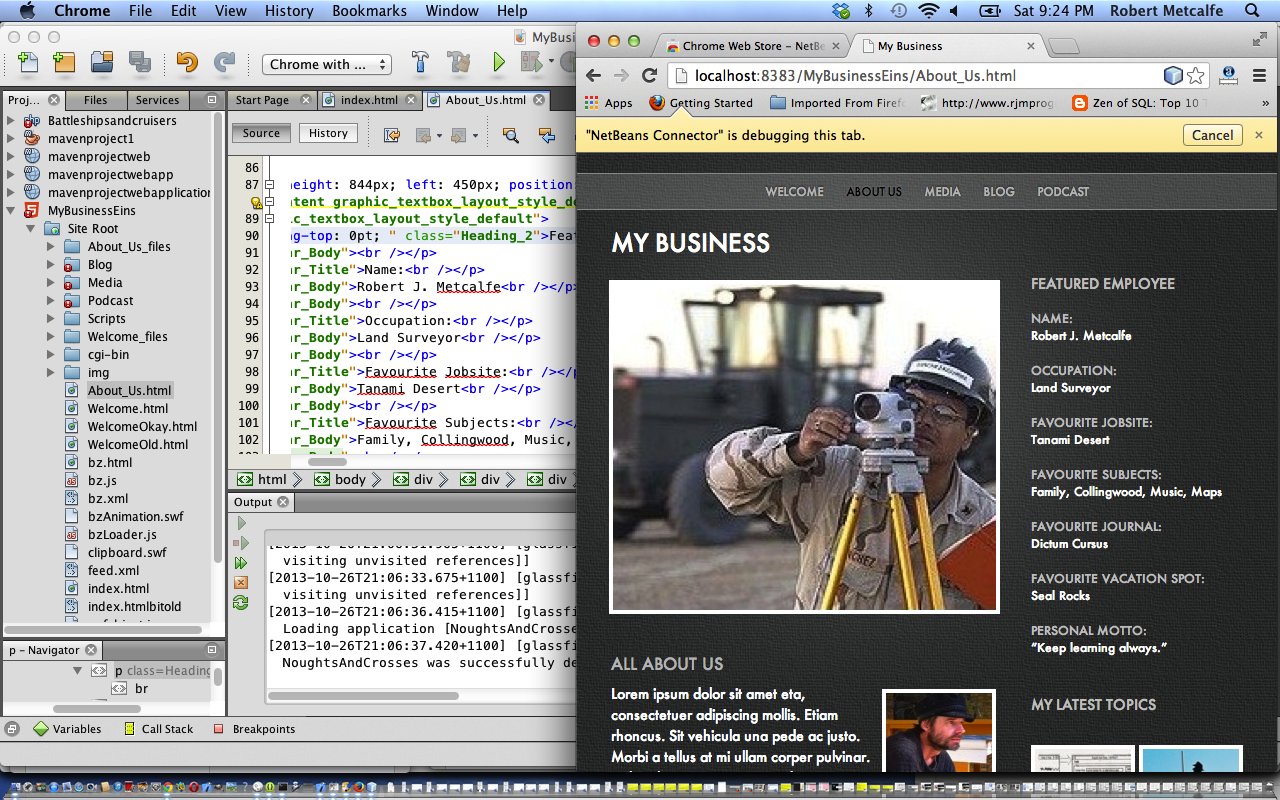Today’s NetBeans HTML/JavaScript Web Application primer tutorial shows how an HTML and JavaScript project can be managed from within an IDE. NetBeans uses the GlassFish web server to run the web application built under NetBeans supervision. The original website is a subdomain built originally in iWeb, with the theme of Land Surveying, and viewable in the local MAMP local web server on port 8888, the contents of which is also maintained along with the NetBeans GlassFish version using port 8383 to display with at the web browser, which is Google Chrome, requiring the NetBeans Connector extension, for our case. You can see this visually on the last slide of the tutorial.
Programming IDEs take a lot of the hard work out of tasks such as compiling and linking in languages such as Java, C, C++, VB.Net and C#. In the case of NetBeans IDE, which this blog reintroduces to you today (its customary to shake hands, and no Klingon is necessary), it can create a HTML/JavaScript Web Application, for instance, as we do today to create a Land Surveying iWeb web application. To cut a long story short, there aint nothin’ wrong with a good ol’ IDE, but beware of IDEs in March.
In saying that about IDEs, and how they make programming easier, often with Open Source programming, it is advantageous to know what goes on “under the hood” (or even “in the ‘hood” … chortle, chortle). So if you ever get an opportunity to get helped creating your own makefile (or make it yourself, even with the Sweet Green Icing … knew it could be worked in!) for something, take the opportunity to learn how to do this, as the Open Source world will become a little easier to navigate with such types of knowledge. You’ve got to admire those early designers of computer languages, and those days when all you had was this tiny bit of memory (64k or “into the heliosphere on 8,000 bytes of memory”) to play with to create your program.
In doing this NetBeans HTML/JavaScript Web Application found that Java JDK 1.6 needed to be upgraded to Java JDK 1.7 to allow for the workings of the GlassFish Web Server used by NetBeans, and, in order to do this, found How to upgrade JDK 1.6 to a higher version to run Glassfish? was incredibly helpful pointing to Java SE Downloads as the useful download area of interest.
NetBeans can be an IDE for much more than HTML/JavaScript … it can supervise PHP, C++, Maven, Groovy and Java. In coming days and weeks we’ll look at more.
We hope you enjoy today’s tutorial.
Link to NetBeans “spiritual home” download page at NetBeans.
If this was interesting you may be interested in this too.




13 Responses to NetBeans HTML/JavaScript Web Application Primer Tutorial